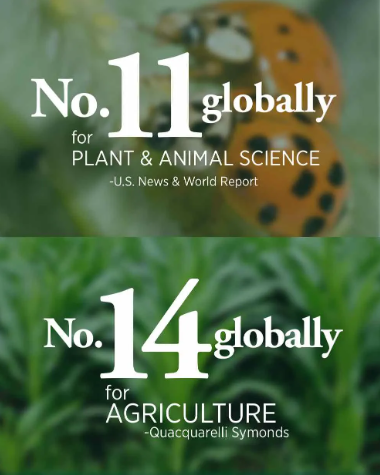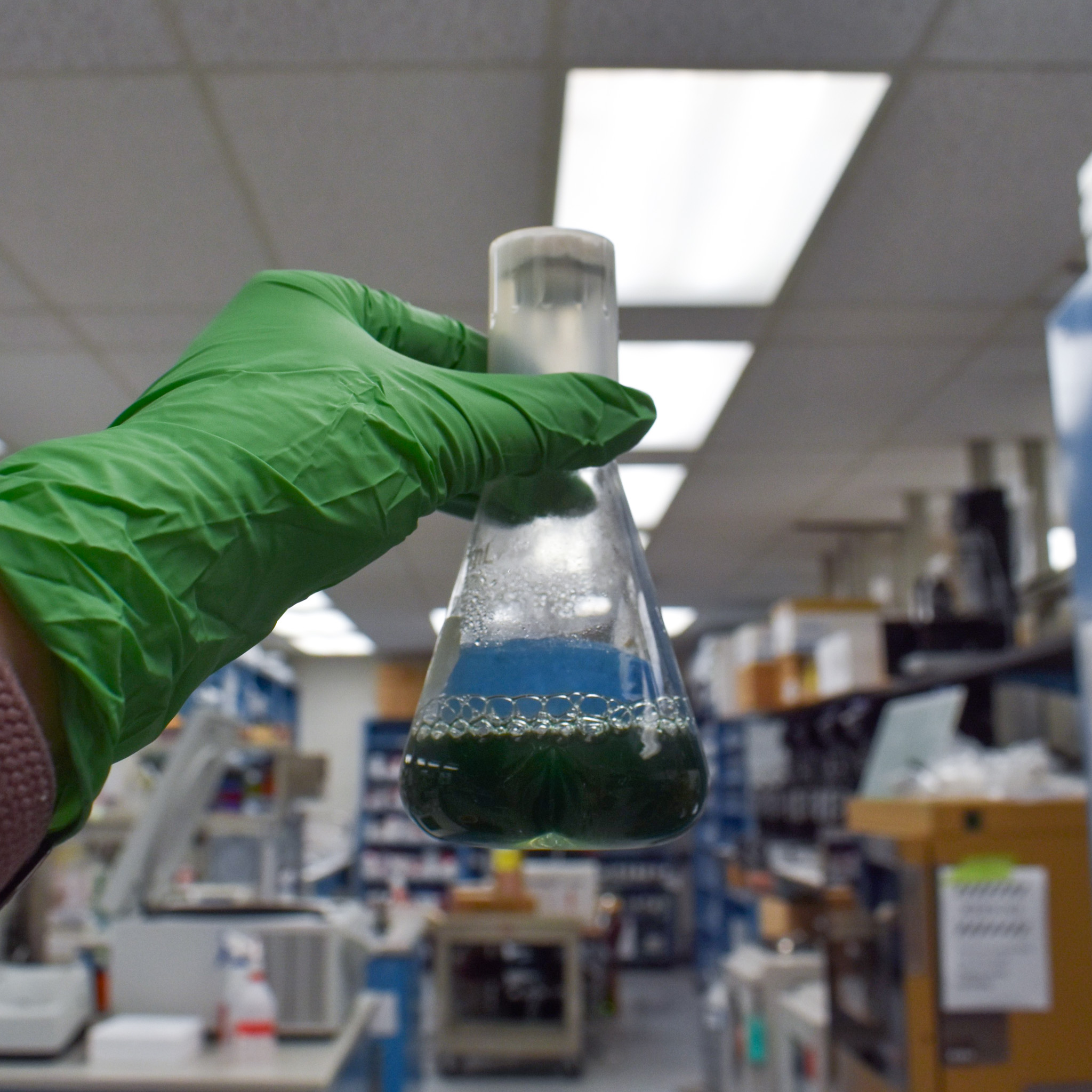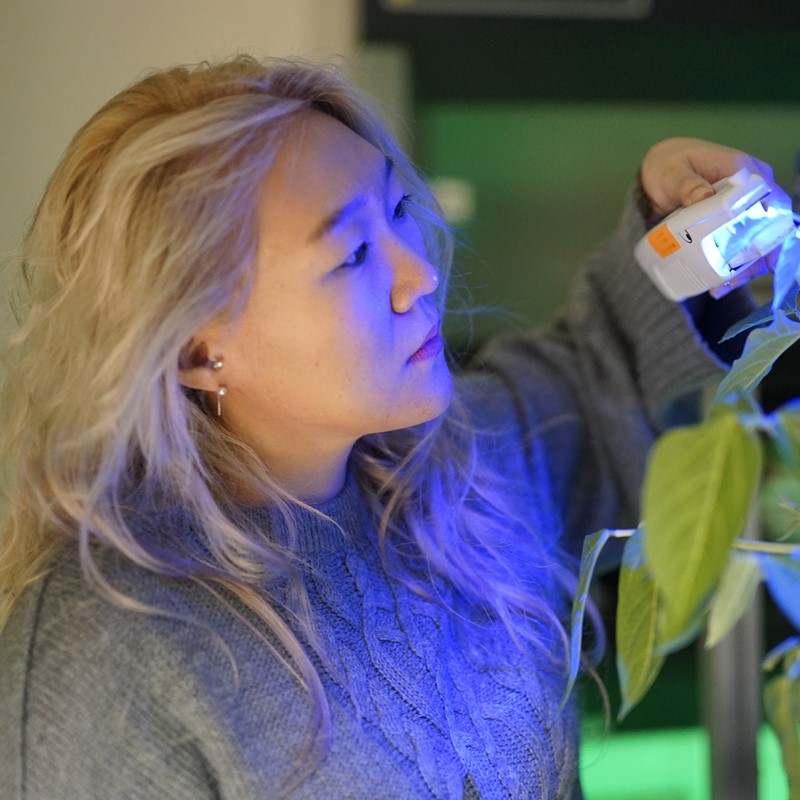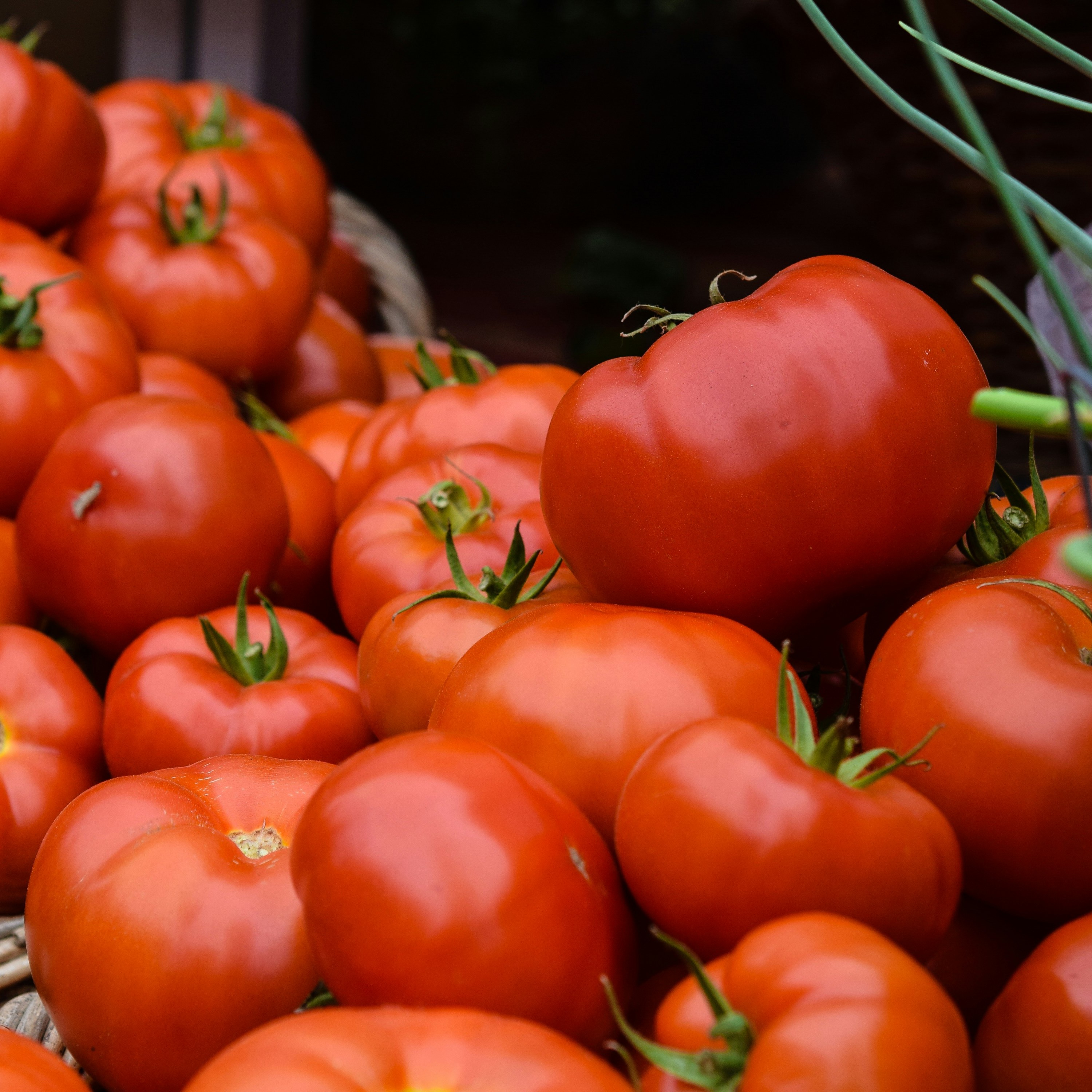Agriculture looks nothing like it did when Michigan State University was founded as
the nation’s first institution to teach scientific agriculture 168 years ago, and
the next 168 years will require as many or more advancements to meet the needs of
our changing planet.
The statistics are familiar. The world’s population is expected to increase by nearly
50% in the next century, while the demand for agriculture crops is expected to more
than double by 2050. The extreme weather anomalies caused by climate change are expected
to continue and worsen in the future, which could substantially reduce agricultural
production globally. Meeting these challenges requires scientists such as those at
MSU who are applying the latest science and technological innovations to solve tomorrow’s
problems in a sustainable way.
 MSU is ranked No. 14 globally for agriculture and No. 11 for plant and animal science.
Spanning multiple departments across the university, MSU has one of the highest concentrations
of plant scientists in the world, and recent investments by the Michigan Legislature
will bolster research capacity through $53 million in funding to update its Plant
Science Greenhouses and Dairy Cattle Teaching and Research Center. With its 5,200-acre
campus outfitted with research laboratories, greenhouses and trial farms as well as
14 outlying agricultural research centers strategically located throughout Michigan,
the university fosters an interdisciplinary environment where collaboration and innovation
are second nature.
MSU is ranked No. 14 globally for agriculture and No. 11 for plant and animal science.
Spanning multiple departments across the university, MSU has one of the highest concentrations
of plant scientists in the world, and recent investments by the Michigan Legislature
will bolster research capacity through $53 million in funding to update its Plant
Science Greenhouses and Dairy Cattle Teaching and Research Center. With its 5,200-acre
campus outfitted with research laboratories, greenhouses and trial farms as well as
14 outlying agricultural research centers strategically located throughout Michigan,
the university fosters an interdisciplinary environment where collaboration and innovation
are second nature.
Many of MSU’s agricultural innovations are home-grown locally in the lab and field,
but their applications span the state, nation and world.
In the coming decades, the quality of crops will be just as important as the quantity.
“The population is growing, resources are shrinking, and it’s obvious that we have
to improve plants,” says Federica Brandizzi, a plant biologist and MSU Research Foundation Professor in the College of Natural
Science. “Plants are the primary providers of food and oxygen to the planet.”
 Raised on a farm, Brandizzi’s respect for the natural world is hardwired. She’s dedicated
her career to finding creative methods for modifying plant cells, helping them to
overcome limitations. And she nurtures that same creativity in her team.
Raised on a farm, Brandizzi’s respect for the natural world is hardwired. She’s dedicated
her career to finding creative methods for modifying plant cells, helping them to
overcome limitations. And she nurtures that same creativity in her team.
A member of the MSU-DOE Plant Research Lab, Brandizzi and her team are focused on growing plants that take up less space, provide
higher crop yields and maintain their nutritional value. One solution is to help plants
grow larger using molecular genetics that produce more amino acids inside the plant.
Amino acids turn on the signal for plants to grow and make the plant more resilient
to stress.
Another focus of Brandizzi and her team involves using enzymes to soften the rigid
cell walls of plants such as soybeans and sorghum. These more flexible and elastic
walls allow these crops to grow, accumulate more dry biomass used as fuel and store
more nutrients. The team is also exploring ways for plants to use less water. For
example, by controlling the pore-like stomata openings on a plant’s leaves, plants
can retain more water and require less of it to grow.
Being able to grow plants with very little water isn’t just of vital importance here
on Earth. It will be essential for growing plants in space, something with which Brandizzi has firsthand experience. Recently, she sent a package
of Arabidopsis seeds to space on NASA’s Artemis I mission to explore how humanity can sustain itself outside
of Earth. Some of the seeds were fortified with amino acids and some were not to see
how these seeds will grow after being exposed to space.
“We are really excited to see what will happen to these seeds,” Brandizzi says. “This
could help us grow plants in space.”

 Raised on a farm, Brandizzi’s respect for the natural world is hardwired. She’s dedicated
her career to finding creative methods for modifying plant cells, helping them to
overcome limitations. And she nurtures that same creativity in her team.
Raised on a farm, Brandizzi’s respect for the natural world is hardwired. She’s dedicated
her career to finding creative methods for modifying plant cells, helping them to
overcome limitations. And she nurtures that same creativity in her team.


